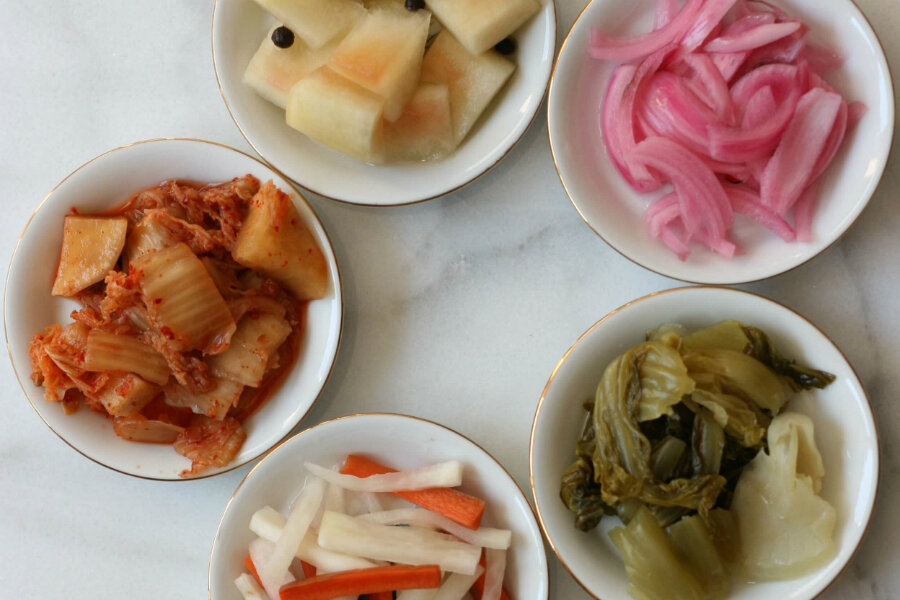Pickled Chinese mustard cabbage
Loading...
I like to pickle all year long and this past summer, I was in quite a pickle frenzy. At one point, I had five different pickles sitting in my fridge (I’m lazy and refuse to can).
Just for fun, here are some random musings about my pickle collection.
1. Watermelon
Nothing screams summer more than watermelon. And this year, I was thrilled to find yellow watermelons at the farmers market (yes, they taste the same but I digress). To appease my hate-to-waste-food conscience that has always been perturbed by the huge hunks of rind leftover after eating the sweet, juicy middle, I decided to pickle them. If you want, you can leave about 1/2-an-inch of flesh but I always chomp the sweet flesh down to the white rind. Be warned, the allspice berries give the watermelon pickles a kick quite unlike the Asian pickles I’m used to. Click here for a recipe.
2. Red onion
Before I left for a week-long vacation, I took stock of my fresh produce. There, lying in my veggie basket was a lonely red onion. My good intentions for it had come and gone so I turned it into refrigerator pickles. I was delighted by the fuschia outcome and top sandwiches, braised meats, etc., etc. with it. Click here for a recipe.
3. Mustard cabbage (kai choy)
I’ve always bought pickled mustard cabbage in vacuum-sealed packs at the Asian store. I was was very excited to discover that it’s easy to make at home and definitely much tastier. See below for recipe.
Carrot and daikon pickles are a must for some of my favorite Vietnamese dishes: bánh mì sandwiches, vermicelli noodle bowls (bún) and much, much more! I always like to have a stash on hand ready to garnish. Click here for a recipe.
Did you know you can kimchi-fy just about anything? Now that you do, try any of these wouldn’t-you-know-it vegetables:
- cucumbers
- radishes
- corn
- turnips
- asparagus
- carrots
- beets
Click here for a recipe.
Pickling is an easy way to give vegetables an easy makeover. And it's the only way I'll eat Chinese mustard cabbage. By submerging the greens in brine, the bitterness is drastically calmed, and its bite miraculously tamed. The resulting pickle can be added to congee, red curry noodles (kao soi), or any dish that could use a little zesty pick-me-up. Feel free to add chopped red chili peppers or chilli flakes for a little zing.
Pickled Chinese mustard cabbage
2 cups water
1 medium bunch mustard cabbage (about 2 pounds), chopped into bite-sized pieces (including the stem)
1/2 cup warm water
1/2 cup rice or white distilled vinegar
1/2 cup granulated sugar
1 tablespoon sea salt
1-inch piece ginger, sliced into coins
1. Bring 4 cups of water to a boil in a large pot. Add the cabbage and stir until it darkens and starts to glisten, 2 to 3 minutes. Drain.
Make the pickling brine by stirring together the water, vinegar, sugar and salt until dissolved.2. Stuff the cabbage and ginger into a 1-quart jar. Pour the brine over the vegetables and seal. Refrigerate 3 to 5 days before eating.
Related post on Pickles and Tea: Tea-Soaked Refrigerator Pickles








